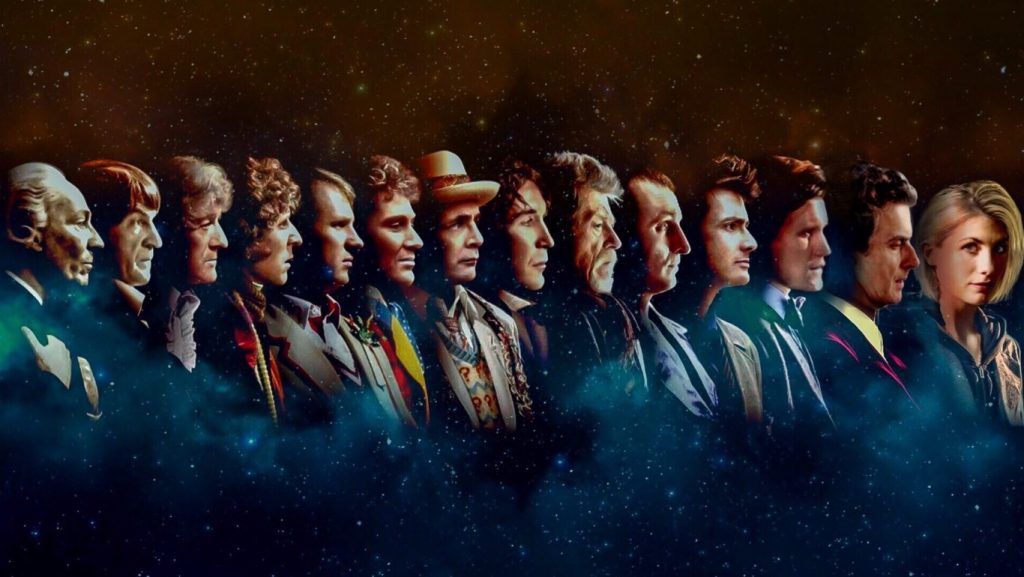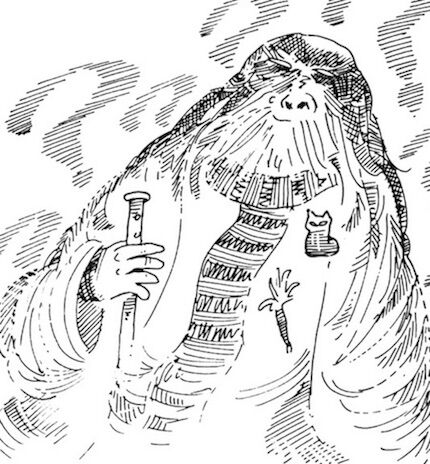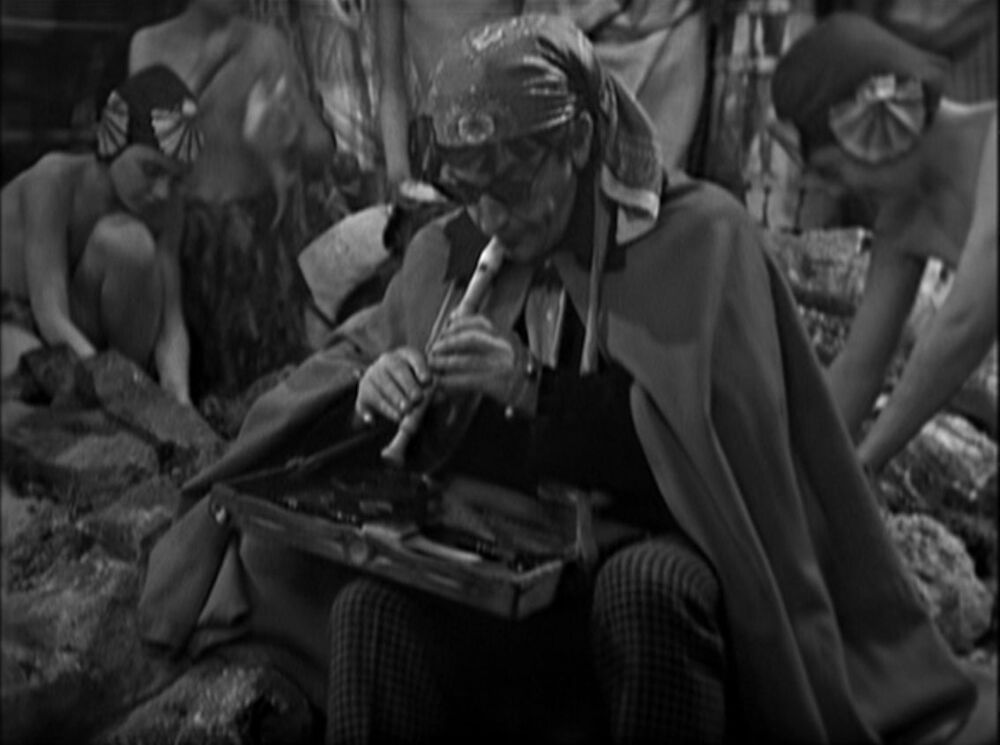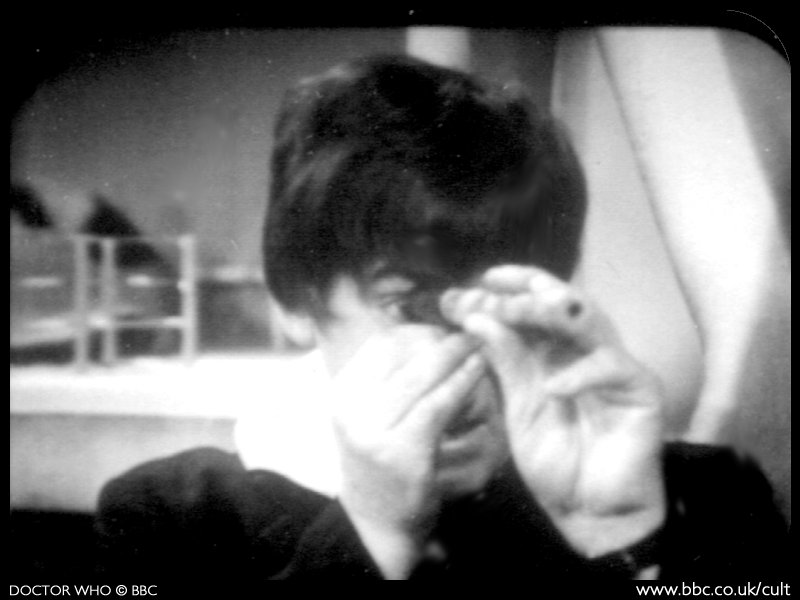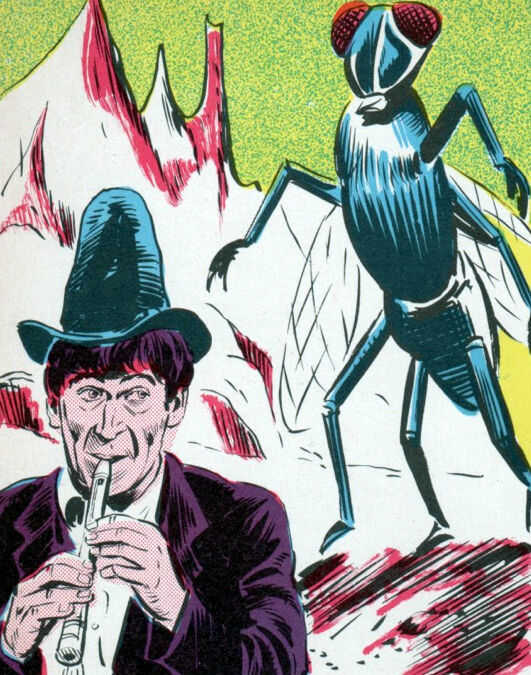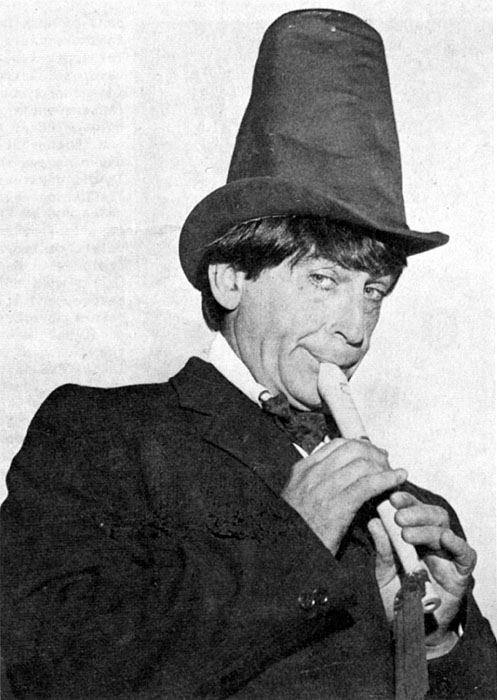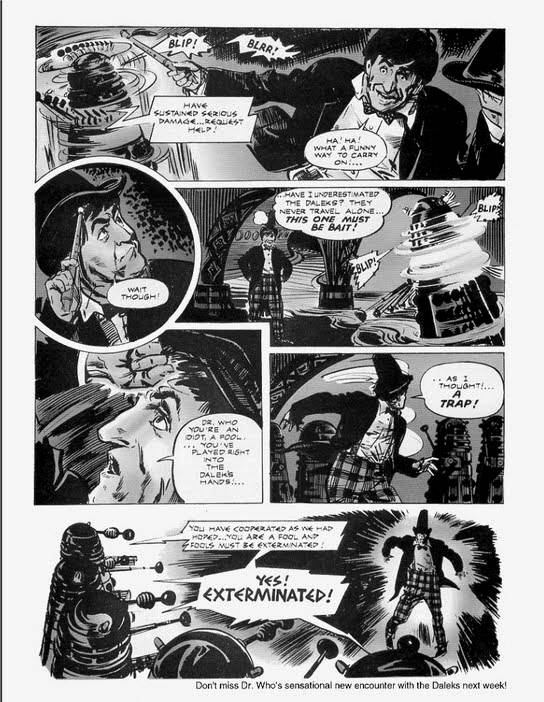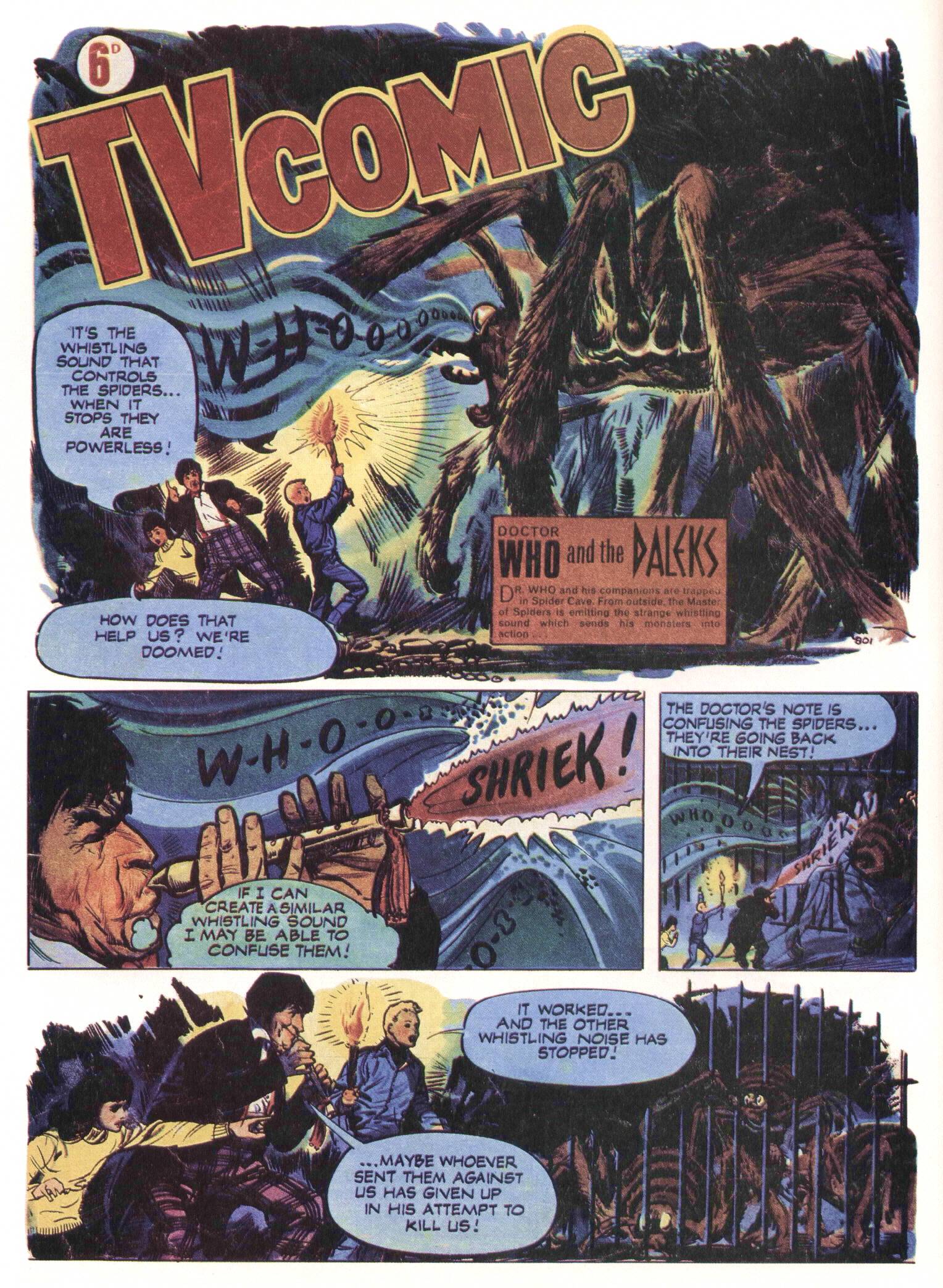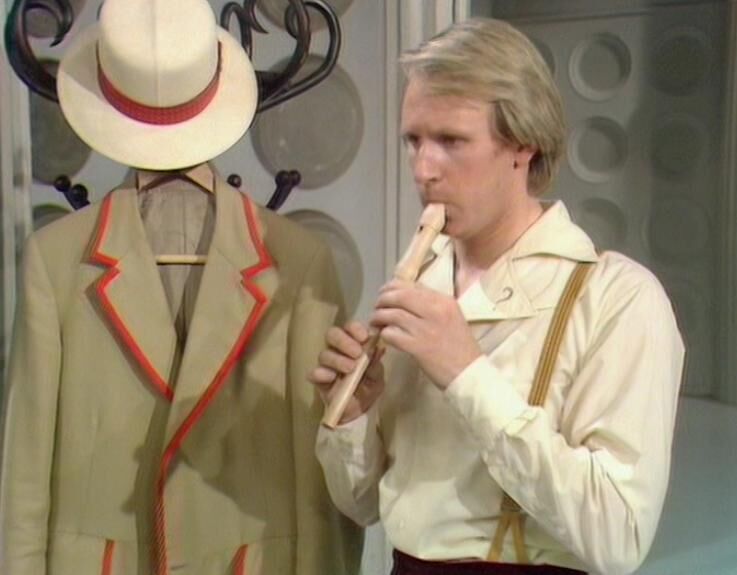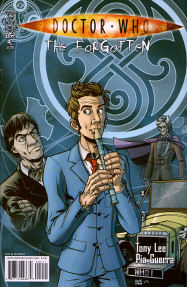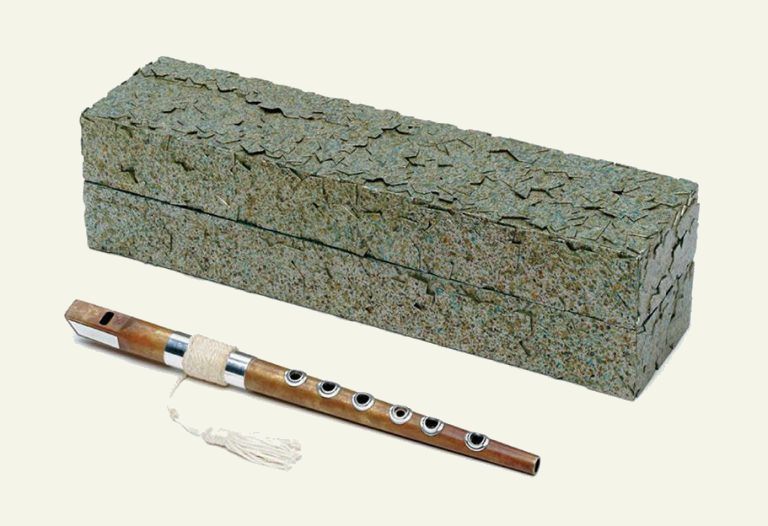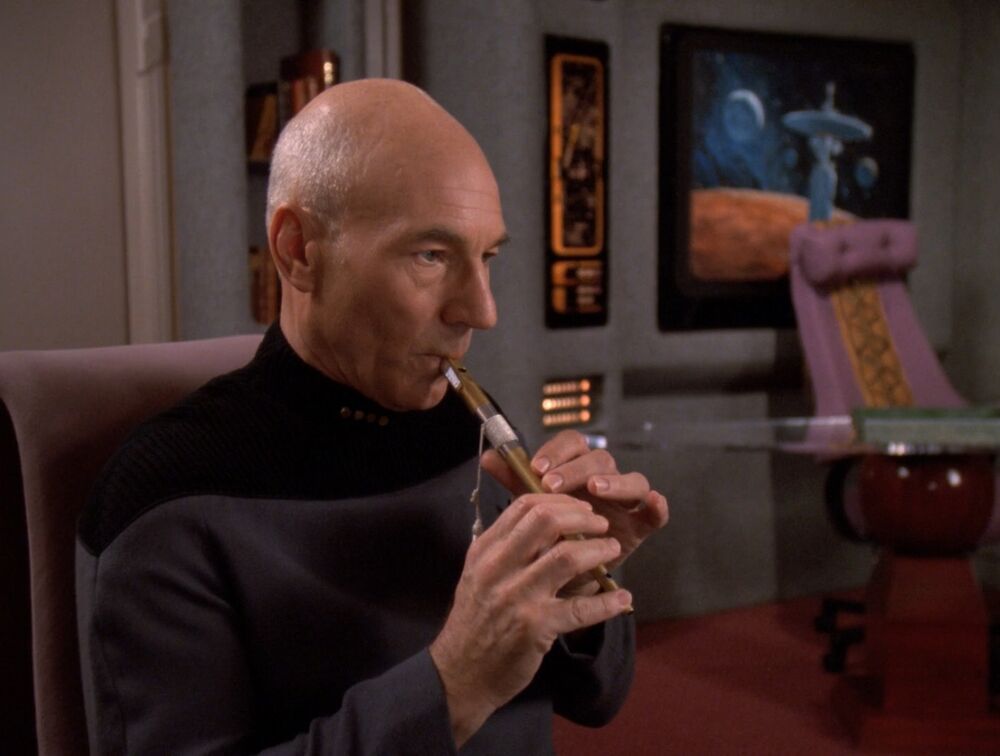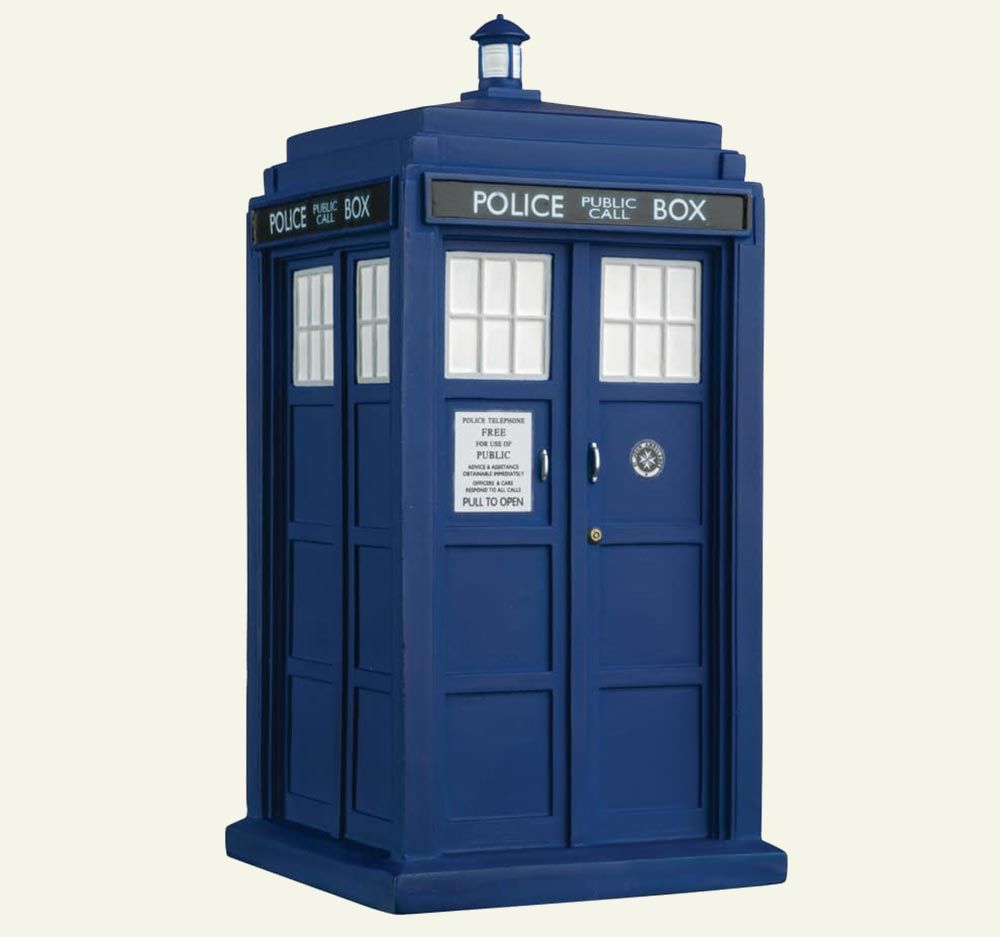Where in the Whoniverse is the Recorder?
The science fiction series Doctor Who, has been broadcast by the British Broadcasting Commission since 1963. It chronicles the adventures of a rogue Time Lord called the Doctor, an extraterrestrial being who appears to be human. The Doctor explores the universe in a space- and time-travelling vehicle called the TARDIS (an acronym for Time and Relative Dimension in Space). The TARDIS exterior appears as a blue British police box, a common sight in 1963 when the series first aired. Aided by various companions, the Doctor combats foes, saves civilisations, and helps people and other beings in need.
The Doctor’s various incarnations have gained numerous recurring enemies during their travels, including the Daleks, their creator Davros, and the Cybermen, as well as other renegade Time Lords, notably Omega and the Master. To date, 14 actors have headlined the series as the Doctor. The transition from one actor to another is written into the plot of the show by means of ‘regeneration’ into a new incarnation, a plot device in which a Time Lord transforms into a new body when the current one is too badly harmed to recover. Since 2017, Jodie Whittaker has played the role. The time-travelling feature of the plot means that different incarnations of the Doctor sometimes reappear, and occasionally even meet.
Doctor Who has spawned numerous spin-offs, including comic books, films, novels, audio dramas, and the television series Torchwood (2006–2011), The Sarah Jane Adventures (2007–2011), K-9 (2009–2010), and Class (2016), and has been the subject of many parodies and references in popular culture.
Whovians (fans of the series) will have noted that the recorder has played an ongoing role in the hands of the eponymous protagonist during his adventures in this convoluted series, proving almost as versatile and powerful a tool as his famous sonic screwdriver. The following offers a partial account of the recorder’s appearance in this remarkable epic. I welcome further sightings.
Theme from Doctor Who by Ron Gainer / Delia Derbyshire, the BBC Radiophonics Studio (1963). Arrranged & performed by Daniel Mantey for hurdy-gurdy, alto recorder, harpsichord, dobro guitar, organ, bass guitar.
First Doctor (William Hartnell)
Who-1 detested the recorder (COMIC: The Power of the Daleks). However, shortly before being sent back to his own time after an encounter with his next five incarnations, Who-1 caught a glimpse of the Father of Time’s attire beneath his robes, which included a scarf and a recorder, leading the Doctor to wonder just WHO the Father of Time really is (COMIC: The Test of Time).
Second Doctor (Patrick Traughton)
Who-2 owned a recorder which he enjoyed playing, mostly for his own amusement, but also to help him think (TV: The Power of the Daleks). While his future incarnations often relied on the sonic screwdriver as their favourite tool, Who-2 preferred the recorder as a multifunctional device.
Having taken a little time to appraise his new body after his reincarnation, Who-2 looks through his things. The Doctor was a great collector, but Who-2 didn’t seem to believe he could have been Who-1, whom he saw in the mirror. Taking out a magnifying glass, he examined his hands. Next, he found a recorder which he took to instantly, dancing a jig whilst playing a jolly tune. After pocketing the recorder, Who-2 read through his 500-Year Diary. The recorder is to accompany him throughout his TARDIS adventures.
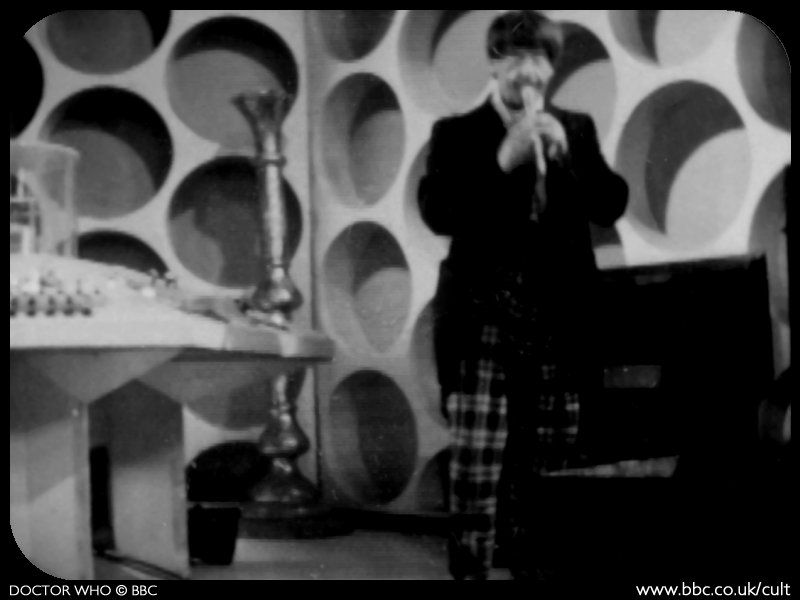
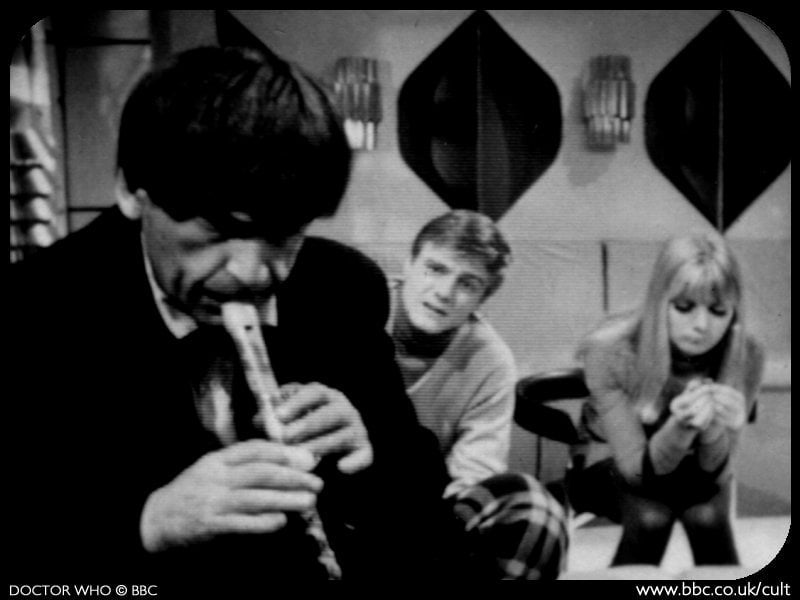
While he may have been frustrated in his attempts to learn a Beatles hit of the day (TV: The Three Doctors), Who-2 is able to blend in with a little traditional Scottish music in The Highlanders (TV) after getting himself captured and thrown in a cell. Honking out Scotland the Brave with an accompaniment from his companion-to-be Jamie McCrimmon on bagpipes allows both to escape after a close encounter with the Necronomicon, a mysterious book of arcane knowledge that transports the TARDIS to a formidable glass city on a distant world where the Archons are intent on revenging themselves against the Time Lords because of an ancient grudge (PROSE: The Nameless City).
Amusing himself with his recorder having been taken prisoner is something of a recurrent theme, seen again in The Abominable Snowmen (TV), The Web of Fear (TV), and The Roundheads (PROSE). It is also taken out whilst visiting an Earth colony (TV: The Macra Terror), whilst visiting Atlantis (TV: The Underwater Menace), and to blend in as part of a parade in a bid to get back to the TARDIS with the minimum of fuss in The Wheel of Ice (PROSE).
Who-2 used his recorder as a spyglass on the Silver Carrier (TV: The Wheel in Space) and in Tobias Vaughn’s base (TV: The Invasion, The War Games).
On an Earth-like planet, Who-2 used his recorder to lure a robotic grasshopper to the TARDIS (PROSE: The Sour Note).
On the planet Harmony, Who-2 used his recorder to escape from his captors by playing it discordantly, having seen earlier that it caused them intense pain (PROSE: Planet of Bones).
In Prague, Who-2 combined his recorder with his sonic screwdriver to communicate with a Doredsor (a living creature that eats time), enabling him to translate colour to binary to Solresol to musical notation and back again (PROSE: The Time Eater).
On prehistoric Earth, Who-2 played his recorder to befriend a herd of mammoths. However, when John and Gillian ride off on the mammoths, the Doctor soon encounters the Trods who capture him and take him into their ship. There they tie him to a conveyor belt in the path of an atomiser, but his recorder playing summons the mammoths who destroy the conveyor. Who-2 then uses the mammoths to destroy the Trods’ static power generator which renders them immobile (COMIC: Pursued by the Trods).
Who-2, John, and Gillian (the Doctor’s grandchildren, who appear only in the TV Comic stories) later return to Trodos in The Trodos Ambush. They don’t find any Trods because the Daleks have turned up and exterminated the native population, as they are wont to do. But some Trod survivors befriend the Doctor, former enemies become friends, and Who-2 gets to whack a Dalek with his ever-handy recorder.
On a swamp planet, Who-2 wards off some giant mechanical arachnids by using his recorder playing to interfere with the control device of the titular Master of Spiders – breaking his hold on them and buying time to build a ray gun which he uses to destroy this particular Master’s mechanical spider along with its villainous passenger (COMIC: Master of Spiders).
When Jo Grant mentions the Beatles song I am the Walrus, Who-2 gets distracted and asks how it goes so he can play it on his recorder (TV: The Three Doctors).
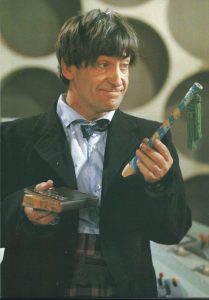
Who-2’s companion Jamie McCrimmon forces Who-2 to leave his recorder in the TARDIS when the crew land in Australia at the start of The Enemy of the World (TV). In one of his book-based escapades, the canny Scot went even further & chopped it into pieces, but the “cosmic hobo” somehow contrives to produce a new one (PROSE: Twin Piques).

Who-10 would later recall that Jamie took to hiding the recorder, also noting that Ben Jackson hated it, before recalling an adventure where his second incarnation had used the recorder to defeat an Alvarian space wyrm (sic) by playing a tune that had lulled it to sleep. In that same adventure the Doctor plays his recorder to transmit direct to the Queen’s mind and sends her to sleep too (COMIC: The Forgotten). However, Ben must have been more curious about the recorder than the Doctor was aware as he can be seen tootling on it in Power of the Daleks (TV).
Who-2 later sent himself back to the Land of Fiction to retrieve his recorder, but instead encountered Goth, who sent him to meet his future self to help deal with Omega (PROSE: Future Imperfect, TV: The Three Doctors).
When Who-2 and Who-3 were transported to Omega’s anti-matter universe, the recorder fell into the TARDIS’ force field generator and was therefore not converted into anti-matter during the trip. When the Doctors discovered this, they offered it to Omega (aka Peylix), and the resulting annihilation seemingly destroyed the renegade Time Lord and his entire universe. Needless to say, Who and Co. make good their escape a nanosecond before the cataclysmic explosion. In exchange for the sacrifice of his beloved recorder, Who-3 promised his earlier self: “I’ll get you another one. I’ll get you a hundred, I’ll get you a thousand of them.” But he never delivered on his promise.
After his encounter with Omega, Who-2’s memories of meeting his past and future selves quickly faded, Who-2 did remember that he had lost his recorder and went to a music shop on Amber Station with Jamie and Zoe Heriot, to get a new one (PROSE: Briefly Noted).
Who-2 used his recorder to measure the size of a room on the World (the very first colony ship to leave Earth) using the echoes it created (AUDIO: The Wreck of the World).
Who-2 gave his recorder to composer Flora Millrace, claiming to have spares (PROSE: The Avant Guardian).
For Who-2, his meeting with the Doctor’s Who-1 and Who-3 incarnations takes place immediately following The Mind Robber (TV). After he, Jamie & Zoe escape full-pelt from the imploding Land of Fiction following the defeat of the Master Brain, Who-2 realises he’s left something important behind and goes back to retrieve it; and the story Future Imperfect (PROSE) explains just what happens before he heads off to help prevent Omega from causing universal mayhem. The man he thought he knew as Lemuel Gulliver from Gulliver’s Travels turns out to be Goth, an important fellow Time Lord who will later become Chancellor, as seen with Who-4 in The Deadly Assassin (TV). Here, though, he is working as a spy for the Celestial Intervention Agency. Having monitored the Doctor throughout The Mind Robber (TV), Goth shows him cosmic energy being drained from Gallifrey through a black hole, and in the blinking of an eye he is standing in the TARDIS with both his future self and a companion he is yet to meet.
Who-2 is believed to have treated viewers to at least 15 blasts of musical magic with a little help from his recorder in his televised adventures alone. Fittingly his first performances as a recorder-player of sorts come in The Power of the Daleks (TV) on Vulcan, subsequently incorporating Scottish music in a marketplace on the Panjistri home world to amuse Lilith (PROSE: Timewyrm: Apocalypse); in the Grange (PROSE: Invasion of the Cat-People); in London in 1948 (TV: Lost and Found); while in a Scottish prison cell (TV: The Highlanders), and in The Underwater Menace (TV) while visiting Atlantis. To this we can add while under Yeti capture in Tibet in The Abominable Snowmen (TV); while visiting an Earth colony (TV: The Macra Terror); while under Robot Yeti guard (TV: The Web of Fear); and even in front of the Daleks in The Evil of The Daleks (TV). However, it is my sad duty to report that Doctor Who’s brief tootles on the recorder can only be described as deplorable and that nothing he says or does gives any inkling that he is aware that the instrument is of serious musical intent.
Third Doctor (Jon Pertwee)
In The Three Doctors (TV), Who-2 and Who-3 were transported to Celestial Engineer Pylix/Omega’s anti-matter universe in which he is trapped. On their journey, the recorder fell into the TARDIS force field generator and was therefore not converted into anti-matter. When the Doctors discovered this, they offered it to Omega who is enraged and dashes it to the floor. This set off a violent matter-antimatter explosion that seemingly destroyed the renegade Time Lord and his universe. In exchange for the sacrifice of his beloved instrument, Who-3 promised his earlier self: “I’ll get you another one. I’ll get you a hundred, I’ll get you a thousand of them.” But he never delivered on his promise.

Fourth Doctor (Tom Baker)
Sarah Jane Smith discovered the Doctor’s recorder in the secondary control room of the TARDIS while traveling with Who-4 (TV: The Masque of Mandragora).
Fifth Doctor (Peter Davison)
The newly regenerated Who-5 found a recorder on top of a full-body mirror in one of the TARDIS hallways. He has a brief tootle on it and senses that he should be familiar with it but finds that it doesn’t fit very well with his personality and so quickly dumps it in favour of a cricket bat (TV: Castrovalva).
Sixth Doctor (Colin Baker)
Who-6, confused by a time-slip with the affected Who-2, tried to remember a musical instrument that was important to him. He mentioned a clarinet and a flute, before recalling it was a recorder and how he cherished it when he stumbled across its original owner/player (TV: The Two Doctors).
Tenth Doctor (David Tennant)
Who-10 wakes from regeneration in a strange room, without the TARDIS or the sonic screwdriver, with only Martha Jones for company. Together they explore the building, soon learning that it is a museum dedicated to the Doctor. The displays consist of various items, such as a Dalek gun, the Seal of Rassilon, and a Voord helmet. They enter a large room where the Doctor’s clothes from nine of his previous incarnations are found, along with items he used during each incarnation, including jelly babies, a walking stick, a recorder, and psychic paper. The Doctor states that he’d be lost without his previous incarnations, saying he particularly loved his fifth (COMIC: The Forgotten).
According to Who-10, the lassimater was part flute, part recorder, and part didgeridoo; and it made the most beautiful music in the universe. The Child of Music (a very old man) played the lassimater once every ten years in the Concert of Most Beautiful Music at the Church of the High Exalted, on Cantabulous Nine. He had done so for 320 years by the time the Doctor and Donna Noble came to hear it. The lassimater was also a prison for the small ethereal creature inside it, which only woke when the Child of Music blew gently into it. The Doctor dropped the instrument which shattered and the old man succumbed to his age and died quietly, thanking the Doctor and Donna (PROSE: Most Beautiful Music).
Eleventh Doctor (Matt Smith)
In the drawing room aboard Who-11’s own new improved Type 40 TARDIS (PROSE Shroud of Sorrow), the contents of Who-11’s pockets include the sonic screwdriver, the psychic paper, a satsuma, a nectarine, a piece of string, a pair of scissors, a carrot, an original Paul E. Wirt pen, given to him by Mark Twain after he had written the first draft of Huckleberry Finn, a large key, a computer mouse, a baseball signed by Babe Ruth – and the recorder used by his second incarnation, which he plays.
Twelfth Doctor (Peter Capaldi)
After being lured into the Celestial Toyroom, Who-12 summoned his recorder to tame the scaly reptiles in the board game Snakes and Ladders. The fact that he was able to summon it alerted the Doctor that something was amiss with the Toyroom (AUDIO: Relative Dimensions).
Thirteenth Doctor (Jodie Whittaker)
After taking over Who-13’s body, the “Spy” Master (Sacha Dhawan) forcibly took Yaz as his companion to a constructed planet. Whether by design or accident, he becomes a caricature of other incarnations of the Doctor, including Who-13’s jacket, Who-10’s tie, Who-7’s sweater, Who-5’s stick of celery, Who-4’s scarf, and even Who-2’s recorder on which he proceeded to play The Skye Boat Song. The Master explained to Yaz that he intended to continue to be the Doctor, but would tarnish the name by causing havoc across the universe. Playing the recorder seems as good a way as any of achieving this end (TV: The Power of the Doctor).
A terrible truth
The recorder is seen most prominently in the hands of Who-2. Now, 9 centuries after its invention, Doctor Who has come to remind us of a terrible truth. Like all great inventions with obvious power for good, the recorder can unleash immense destruction, too. Since the number of recorders on Earth exceeds that of all other musical instruments combined, “the still-discordant wavering multitude” now have it in their power to use recorders to blow up the universe. Our only hope lies in turning the tables against them by doing our utmost to realize the full musical potential of our little instrument, for “music hath charms to soothe the savage breast”.
Footnote: The Ressikan Flute
The British Doctor Who series has a US- American counterpart in the ongoing Star Trek series and its various spinoffs. A number of musical instruments have been featured in this epic, amongst them the Ressikan flute, a small metal duct flute native to the community of Ressik on the dead planet Kataan. It is played notably in the year 2368 by Captain Jean-Luc Picard of the starship Enterprise. As can be seen from the prop itself, the instrument is actually a decorated tin whistle (a six-holed pipe), a relative of the recorder – nice box!
Picard acquired his Ressikan flute through an experience he had related to a probe launched from the dead planet. The probe projected a particle beam to Picard’s brain and played out a scenario by which Picard actually experienced over 50 years in the span of only 25 actual minutes. Living the life of a man called Kamin, he also learned how to play the flute, a skill that he retained after the probe finished its program, exclaims: “When I awoke, all that was left of my life there … was the flute I’d taught myself to play.” Picard considered the flute to be one of his most prized possessions. It represented, to him, an entire lifetime, completely different from that he lived aboard the USS Enterprise-E, with a wife, children, and even a grandson (Star Trek, The Next Generation, The Inner Light).
Inner Light is widely considered by critics and fans as one of the best episodes of the entire Star Trek franchise and was a favorite of members of the show’s cast and crew. Picard plays music by USAmerican composer Jay Chattaway (1946–), dubbed by musician Bryce Martin on an Oak tin whistle in the key of D.
At the beginning of Star Trek, TNG: A Fistful of Datas (sic.), Picard (dubbed) is seen and heard arranging a Mozart trio for Ressikan flute.
Astonishingly, the original non-playing prop was auctioned as Lot #537 in Christie’s (Los Angeles) 40 Years of Star Trek: The Collection for a total of US$48,000. In 2021, it was re-sold as Lot#242 in Prop Store’s (Los Angeles) Entertainment Memorabilia Live Auction for US$190,000!
Now, where in the Whoniverse is the recorder used by Doctor Who?
Audio, Big Finish Productions, London
- Faith, Penelope. 2016. Doctor Who – Lost and Found. https://www.bigfinish.com/releases/v/doctor-who-short-trips-lost-and-found-1349
- Platt, Marc. 2010. Doctor Who: Relative Dimensions. https://www.bigfinish.com/releases/v/doctor-who-relative-dimensions-545
- X Attack, Timothy. 2017. Doctor Who: The Wreck of the World. https://www.bigfinish.com/releases/v/doctor-who-the-wreck-of-the-world-1322
BBC TV Episodes
- Bidmean, Christopher Hamilton. 1982. Castrovalva.
- Black, Ian Stuart. 1967. The Macra Terror.
- Chibnall, Chris. 2022. The Power of the Doctor.
- Dicks, Terrence & Malcom Hulke. 1969. The War Games.
- Dicks, Terrence. 1972. The Three Doctors.
- Haisman, Mervin & Henry Lincoln. 1967. The Abominable Snowmen.
- Haisman, Mervin & Henry Lincoln. 1968. The Web of Fear.
- Holmes, Robert. 1985. The Two Doctors.
- Jones, Elwyn & Gerry Davis. 1996-7. The Highlanders.
- Ling, Peter. 1968. The Mind Robber.
- Marks, Louis. 1976. The Masque of Mandragora.
- Orme, Geoffrey. 1967. The Underwater Menace.
- Sherwyn, Derrick. 1968. The Invasion.
- Whitaker, David. 1966. The Power of the Daleks.
- Whittaker, David. 1967. The Evil of the Daleks.
- Whittaker, David 1967-8. The Enemy of the World.
- Whittaker, David. 1968. The Wheel in Space.
Comics
- Cook, Roger Noel. 1967. “The Trodos Ambush.” TV Comic 788-791.
- Cook, Roger Noel. 1967. “Master of Spiders.” TV Comic 799-802.
- Cook, Roger Noel. 1968. “Pursued by the Trods.” TV Comic Annual.
- Lee, Tony. 2008. The Forgotten. TF 1-6. IDW Publishing, San Diego.
- Quinn, Tim & Dicky Howett. 1987. “Doctor Who Fun Book”: The Test of Time. Target Books.
Prose
- Battersby, Lee. 2007. The Time Eater. Short Trips: Destination Prague. Big Finish, London.
- Baxter, Stephen. 2012. The Wheel of Ice. Ace Books, New York.
- Dicks, Terrance William. 1975, repr. 2012. The Three Doctors. Doctor Who Target Novelisations 64. BBC Books, London.
- Gattis, Mark. 1997. The Roundheads. BBC Books, London.
- Llewellyn, David. 2010. Night of the Humans. Doctor Who New Series Adventures. BBC Books, London.
- Platt, Marc. 1991. Future Imperfect. Doctor Who Yearbook 1992. Marvel UK.
- Richards, Justin. 1994. Briefly Noted. Doctor Who Yearbook 1995. Marvel UK.
- Richards, Justin. 2008. Most Beautiful Music. Doctor Who, the Official Annual 2009. BBC Children’s Books, London.
- Robinson, Nigel. 1991. Timewyrm: Apocalypse. Virgin Books, London.
- Russell, Garry. 1995. Invasion of the Cat-People. Virgin Books, London.
- Scott, Michael. 2013. The Nameless City. Puffin Books, London.
- ? Writer. 1967. Planet of Bones. Doctor Who Annual 1968.
- ? Writer. 1967. The Sour Note. Doctor Who Annual 1968.
YouTube Video
- BBC TV. 1973. The Second Doctor plays recorder (Skye Boat Song). Available https://youtu.be/4C8Bpl32rl4. Accessed 19 October 2021.
While the recorder is one of the signature traits of the Second Doctor, surprisingly few of the surviving serials show it. In this short clip from The Web of Fear, the doctor plays The Skye Boat Song while he, Jamie, and the Brigadier are held prisoner by the Yeti. (Ep 6, about 9 minutes in). - BBC TV. 1973. Doctor Who: Arriving in Omega’s World. Available https://youtu.be/oyLqsU-6m-c. Accessed 10 October 2021.
- BBC TV. 1973. The Second Doctor meets the Third Doctor. Available https://youtu.be/vbnWmR7piEg. Retrieved 10 October 2021.
- BBC TV. 1982. Castrovalva. Available http://www.youtube.com/watch?v=YhGAg8RdNHU Retrieved 21 October 2021.
- Dalam Reviews. 2021. Classic Doctor Who Review: The Three Doctors. Available https://www.youtube.com/watch?v=Rj7-RLRyFZ0. Accessed 19 October 2021.
- Certifiably Ingame. 2019. Who was Omega? https://youtu.be/LGNveduaI7Q. Accessed 10 October 2021.
- The Ood Sphere – Dr Who Clips. 2022. The Master Plays the Second Doctor’s Recorder! Accessed 8 November 2022. https://www.youtube.com/embed/6oxGN41SBCo
References
- British Broadcasting Commission. 2021. Doctor Who. Accessed 7 December 2021.
- Classic Doctor Who. 2012. Special Feature – Playing the Recorder – Doctor Who -The Krotons. YouTube. Accessed 26 December 2021.
- Corcoran, Ronald E. 1968. Patrick Troughton, Right or left-handed recorder player ..? Recorder & Music Magazine 2 (10): 319.
- Dicks, Terrance William. 1975–2012. Internet Generative Fiction Database. The Three Doctors. Accessed 7 December 2021.
- Doctor Who World. 2021. Prologue > The Doctors > Second Doctor > Recorder
- Fandom. 2021. Tardis, Tardis Data Core > The Doctor’s possessions > Musical instruments > The Doctor’s Recorder. Accessed 7 December 2021.
- Fandom 2021. Memory Alpha: Ressikan Flute. Accessed 9 December 2021.
- Haining, Peter. 1983. Doctor Who: A Celebration; Two Decades Through Time and Space. Carol Publishing Group, Secaucus.
- Morley, Chris. 2013. Doctor Who: 10 ways Patrick Troughton made the recorder cool. WhatCulture, 9 December 2013. Accessed 7 December 2021.
- Morley, Chris. 2016. Doctor Who: A recordered history. Warped Factor. Accessed 7 December 2021.
- Tate, Lisa Kay. 2015. Find That Prop: The Second Doctor’s “Flute”. Minion Feeding 101. Accessed 7 December 2021.
- WhoPix. The Classic Doctor Who Comics from TV Comic, TV Action and Countdown. Accessed 10 December 2021.
- Wikipedia. 2021. Doctor Who. Accessed 26 December 2021.
- Wikipedia. 2021. Whoniverse. Accessed 7 December 2021.
Cite this article as: Nicholas S. Lander. 1996–2024. Recorder Home Page: Doctor Who and the Recorder. Last accessed 24 April 2024. https://www.recorderhomepage.net/dr-who-and-the-recorder/
